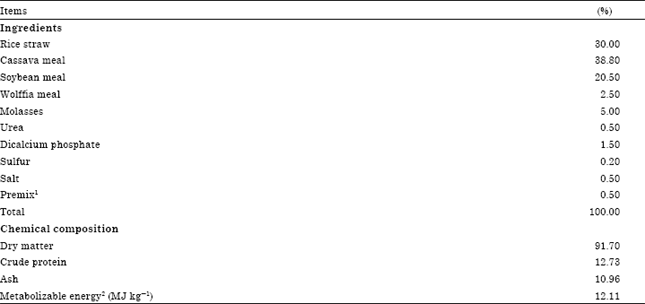Research Article
Effect of Heat-treatment on Ruminal Protein Degradability of Wolffia Meal (Wolffia globosa L. Wimm)
Animal Feed Resources and Animal Nutrition Research Unit, Faculty of Veterinary and Animal Sciences, Mahasarakham University, Muang, Maha Sarakham, 44000, Thailand
Songsak Chumpawadee
Animal Feed Resources and Animal Nutrition Research Unit, Faculty of Veterinary and Animal Sciences, Mahasarakham University, Muang, Maha Sarakham, 44000, Thailand













